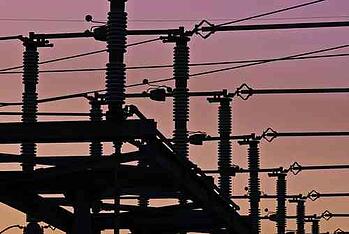Girding the Grid: Vandalism, Safety and Security
 You may not have heard much about it, but in April of 2013, someone slipped into an underground vault near a busy freeway in California and cut a few telephone cables. Half an hour later, snipers began firing on a nearby electrical substation, knocking out 17 transformers — enough to make much of Silicon Valley go dark.[1] It was called the "the most significant incident of domestic terrorism involving the grid that has ever occurred" by Jon Wellinghoff, chairman of the Federal Energy Regulatory Commission at the time.
You may not have heard much about it, but in April of 2013, someone slipped into an underground vault near a busy freeway in California and cut a few telephone cables. Half an hour later, snipers began firing on a nearby electrical substation, knocking out 17 transformers — enough to make much of Silicon Valley go dark.[1] It was called the "the most significant incident of domestic terrorism involving the grid that has ever occurred" by Jon Wellinghoff, chairman of the Federal Energy Regulatory Commission at the time.
While media has zeroed in on the possible connection between this and other similar attacks as the crux of this emerging story, utilities and municipalities can find another lesson in the coverage. Call it vandalism or terrorism, all manner of issues from defacing parts of the grid, to unlawful attachers dangerously taking up space, to the wide variety of horror-story situations that can happen in underground vaults, make for a troubling trend that appears to be on the rise.
In 2010, someone chopped down six utility poles in Illinois.[2] In late February of this year, more than 3,000 consumers lost power in New Hampshire as vandals unloaded guns at insulators on power poles, causing blackouts and at one known fire.[3] The Wall Street Journal calculates there have been 274 significant instances of vandalism or deliberate damage done to components of the U.S. grid in the past 3 years.[4]
Damage to even one utility pole can cause disruptions in service and require a truck roll to remedy the problem, costing money and time. What can you do? Like any good Boy Scout, Be prepared.
Paper is a great place to record your grocery list and Excel® is a poweful spreadsheet program, but neither comes close to giving you an “easy button”— a system that offers the documentation, connectivity and robust notification ability you need in a crisis. Fortunately, an online, integrated joint use communication, inventory and management system can help.
How? Consider this example: A utility pole or series of poles is vandalized, knocking out service to a number of electric customers. As the pole owner, your goal is to restore service as quickly as possible. Drawing on prior field collection data allows you to quickly know what attachers might also be affected. Online documentation at your fingertips allows you to quickly reference all attachment communications. Easy access to contracts lets you see whether or not a pole attacher is supposed to be on a particular utility pole or that it is a bootleg. Online communication software options allow you to reach out quickly across your company and to joint use partners and contractors. Finally, when it is time for the work to be done, automated workflows ensure the job goes smoothly and consistently.
Large-scale vandalism or a terrorist attack is nothing anyone wants to think about. With a little preparedness your company can pick up the pieces quickly and cost-effectively with as little impact as possible should trouble arise. If there is one thing everyone needs in a crisis, it is an “easy button”. Unfortunately, that does not exist. However, end to end joint use solutions do exist, and will go a long way toward helping your business be prepared.
[1] http://www.foxnews.com/politics/2014/02/06/2013-sniper-attack-on-power-grid-still-concern-in-washington-and-for-utilities/
[2] http://www.ect.coop/newsmakers/co-op-news-newsmakers/on-the-hunt-for-power-pole-vandals/16384
[3] http://www.wmur.com/news/-3k-lose-power-after-vandals-shoot-at-utility-poles-police-say/24639988#mid=18737114
[4] http://online.wsj.com/news/articles/SB10001424052702304851104579359141941621778

Comments